Datasheet
Year, pagecount:2010, 49 page(s)
Language:English
Downloads:7
Uploaded:August 12, 2023
Size:1 MB
Institution:
[SE-ÁOK] Semmelweis University | Faculty of Medicine
Comments:
Attachment:-
Download in PDF:Please log in!
Comments
No comments yet. You can be the first!Content extract
ANGIOEDEMA, LARYNGEAL EDEMA DIAGNOSIS AND MANAGEMENT Henriette Farkas Semmelweis University 3 rd Department of Internal Medicine Budapest, Hungary farkash@kut.sotehu UPPER AIRWAY OBSTRUCTION (UAO) AETIOLOGY FUNCTIONAL CAUSES MECHANICAL LARYNGEAL CAUSES EDEMA CNS depression Foreign body aspiration is a life-threatening condition characterized by acute or gradual onset with Peripheral nervous system Infections swelling of the laryngeal mucosa and neuromuscular abnormalities Laryngeal edema Haemorrhage and haematoma Trauma Burns Neoplasm Congenital Miscellaneous PATIENT’S COMPLAINTS, SIGNS • • • • • • • • • • • • • • Dysphagia Sensation of a lump in the throat Feeling of tightness Voice changes Hoarseness Roughness Resonant barky cough Stridor Dyspnea Fear of asphyxation Aphonia Patient is unable to breathe, speak, or cough and may hold the throat between the thumb and index finger (the universal choking sign) Patient is anxious and agitated
PHYSICIAN EXAMINATION 1. Medical history (patient or relatives) 2. Physical examination • Voice changes • Hoarseness • Roughness • Resonant barky cough • Stridor • Dyspnea • Aphonia • Patient is anxious and agitated • Vigorous attempts at respiration with intercostal and supraclavicular retraction • Patient becomes rapidly cyanosed • Respiratory efforts diminish • Loss of consciousness • Heart rate and blood pressure raised, bradycardia • Hypotension, cardiac arrest • Death is inevitable if the obstruction is not relieved within 2-5 minutes of the onset EXAMINATION IN THE HOSPITAL flexible fibreoptic laryngoscopy Indirect laryngoscopy Radiographic imaging AP and lateral plain neck radiographs, CT, MRI direct laryngoscopy Congenital stenosis Recurrent paralysis Foreign body Normal larynx Infection Laryngeal oedema Tumor THE EFFECT OF EDEMA ON THE CROSS SECTIONAL AREA OF THE SUBGLOTTIC LARYNX Physical status Neonate Child Adult
Normal Subglottic area (mm2) Effect of 1 mm edema 12 48 147 3 27 108 Reduction of airway area % 75 44 27 MANAGEMENT Treatment consists of • • • • • immediately ensuring an adequate airway administration of oxygen intravenous fluids epinephrine, antihistamines and steroids C1-INH concentrate, bradykinin receptor B2 antagonist, kallikrein inhibitor or FFP PRINCIPLES OF AIRWAY MANAGEMENT TECHNIQUES 1. Try simple manoeuvres to open airway • Jaw thrust is used when other methods have failed. • Oro- or nasopharyngeal airway is useful in the unconscious patient. • If the patient is not immediately intubated the coma position should be used. PRINCIPLES OF AIRWAY MANAGEMENT TECHNIQUES 2. Endotracheal intubation Method of choice for the unconscious apnoeic patient PRINCIPLES OF AIRWAY MANAGEMENT TECHNIQUES 3. Surgical airway • cricothyroidotomy • percutanous tracheotomy • emergency tracheostomy CRICOTHYROIDOTOMY Cricothyroidotomy is an
emergency procedure when intubation or tracheotomy are impossible. Relatively easy way of providing an emergency airway. (cricothyroid membrane is near the skin surface) PERCUTANOUS TRACHEOSTOMY PCT is cost-effective, safe, fast, and easy to perform TRACHEOTOMY Emergency tracheotomy rarely required. Formal surgical tracheotomy under local anaesthesia may be a prudent approach under some controlled conditions. CLASSIFICATION OF ANGIOEDEMA • ALLERGIC • • • • • • • • • • • NSAID-induced Idiopathic Associated with idiopathic or autoimmune urticaria Associated with urticaria vasculitis Infections and infestations Angioedema with eosinophilia Associated with some physical urticarias and with cholinerg urticaria Associated with contact urticaria Angiotensin- converting enzyme inhibitor-induced C1-INH deficiency Hereditary angioedema with normal C1-INH Kaplan, Graeves 2005 PATHOMECHANISM IGE MEDIATED, I TYPE HYPERSENSITIVITY Roitt COMMON
ALLERGENS • • • • Foods such as peanut, milk, nuts, shellfish, fish, eggs, and other foods. Medications including penicillin and related or unrelated antibiotics, may produce allergic reactions. Insect sting venom Less common causes are latex rubber in surgical gloves and enema devices SYMPTOMS May be localized or part of a systemic anaphylactic reaction • in acute allergic laryngeal edema, angioedema of the lips and supraglottis, glottis, and infraglottis results in airway obstruction • systemic reaction consists of a variable combination of urticaria (79%), bronchospasm (70%), shock, cardiovascular collapse and abdominal pain DIAGNOSIS Prick test Specific IgE Use specific monoclonal antibodies against allergens MANAGEMENT ACUTE TREATMENT CONSISTS OF • • • • • immediately ensuring an adequate airway and administration of oxygen, intravenous fluids, epinephrine:im, iv antihistamines and steroids NEXT STEP hyposensibilisation (bee, wasp venom)
INFORMATION, EMERGENCY CARE KIT • Wear a medic alert bracelet at all times • Get information from patient’s doctor and the pharmacist before taking any medication • Read all food labels carefully • Carry with the patient an emergency care kit so that it can be self-administered epinephrine CLASSIFICATION OF ANGIOEDEMA • • • • • • • • • • • • Allergic NSAID-induced Idiopathic Associated with idiopathic or autoimmune urticaria Associated with urticaria vasculitis Infections and infestations Angioedema with eosinophilia Associated with some physical urticarias and with cholinerg urticaria Associated with contact urticaria ANGIOTENSIN- CONVERTING ENZYME INHIBITORINDUCED Acquired C1-INH deficiency Hereditary angioedema Kaplan, Graeves 2005 KININ SYSTEM HW kininogen Angiotensinogen kallikrein Vasodilatation Increased vascular permeabity renin Angiotensin I bradykinin ACE BK metabolits Angiotensin II Vasoconstriction Vascular hypertrophy
Aldosterone release EFFECT OF ACE INHIBITORS kininogen angiotensinogen kallikrein Vasodilatation Increased vascular permeabity renin bradykinin Angiotensin I ACE ACE inhibitor Angiotensin II BK metabolits ATII Blocker Vasoconstriction Vascular hypertrophy Aldosterone release ACE INHIBITORS 35 - 40 million patients worldwide are treated with ACE inhibitors, ACE inhibitors are generally well tolerated. ADVERSE EFFECTS: Significant adverse effects include hypotension, renal impairment, cough, and angioedema Prevalence of angioedema: 0.1-07% Angiooedema can first manifest itself from a few hours to 10 years after an ACE inhibitor has been first taken.Therefore physicians fail to recognize the association. MANAGEMENT OF ACE INHIBITOR-INDUCED ANGIOEDEMA ACUT TREATMENT Avoid ACE inhibitors Conservative treatment antihistamines with or without steroids Tongue and upper airway are involved, intramuscular adrenaline should be used, some patients require an artificial airway
C1 inhibitor concentrate,FFP, SDP, kallikrein inhibitor or bradykinin receptor antagonist has been successfully MANAGEMENT OF ACE INHIBITOR-INDUCED ANGIOEDEMA LONG-TERM Should not be switched to another ACE inhibitor. Calcium channel blockers and/or thiazides are appropriate as alternative antihypertensives. Beta blockers are contraindicated in the initial setting. Alternative medications: are AT II receptor blockers Several cases of angioedema associated with ATII receptor although the overall incidence appears lower than that with ACE inhibitors. CLASSIFICATION OF ANGIOEDEMA • • • • • • • • • • • • Allergic NSAID-induced Idiopathic Associated with idiopathic or autoimmune urticaria Associated with urticaria vasculitis Infections and infestations Angioedema with eosinophilia Associated with some physical urticarias and with cholinerg urticaria Associated with contact urticaria Angiotensin- converting enzyme inhibitor-induced ACQUIRED C1-INH DEFICIENCY
HEREDITARY ANGIOEDEMA Kaplan, Graeves 2005 HEREDITARY ANGIOEDEMA (HAE) Type I (Donaldson, 1963) C1-inhibitor (C1-INH) deficiency Type II (Rosen, 1965) Type III (Bork, Binkley, 2000, Martin 2001) Normal C1-INH HEREDITARY ANGIOEDEMA (HAE) Type I. II • autosomal dominant inheritance • deficiency of C1 inhibitor • onset of symptoms: in childhood • prevalence: 1:10 000, 1:50 0000 • mortality: 20-30 % HEREDITARY ANGIOEDEMA (HAE) Type III • Mainly in vomen • Percipitating factors: oral contraceptive therapy, hormone replacement treatment, pregnancy • Symptoms: similar to HAE Type I and II • Subgroup: missense mutation in factor XII gene • Normal C1-INH function • Not respond antihistamine treatment • Tranexamic acid, C1-INH concentrate? HEREDITARY ANGIOEDEMA (HAE) TYPE I & II Autosomal dominant inheritance Deficiency of C1-inhibitor (C1-INH) Two phenotype HAE I and II Prevalence: 1/50 000 Mortality: 20-30% Osler Am J Med Sci 1888; Donaldson Am
J Med 1963; Rosen J Clin Invest 1971 PATHOMECHANISM C1 -INH C1-INH FXII FXIIa Prekallikrein C1 C42 HWK Kallikrein C1rs Plasminogén C2 kinin Bradykinin Plasmin ede m a DIAGNOSIS OF HAE Family history Clinical symptoms asymptomatic Measurement of complement • pedigree analysis in HAE • genetic testing Confirm the diagnosis in uncertain cases Prenatal diagnostics Agostoni A Medicine 1992 SUBCUTANEOUS SYMPTOMS Farkas H Acta Dermato-Venereol 2001 SUBCUTANEOUS SYMPTOMS Bork K Am J Med 2006 SUBMUCOSAL SYMPTOMS Upper airway mucosa Pharyngeal edema Laryngeal edema Bork K Transfus Apher Sci 2003; Tsunoda Laryngoscope 2000 SUBMUCOSAL SYMPTOMS Intestinal mucosa intense, colicky abdominal pain nausea and vomiting postattack (watery) diarrhea can mimic an „acute abdomen” Unnecessary surgical intervention Bork K Am J Gastroenterol 2006 ABDOMINAL ULTRASOUND Nonspecific but extremely sensitive method ascites edematous
intestinal wall In patients with known HAE Differential diagnosis Recurrent abdominal complaints with ascites HAE should be considered if all other differential diagnostic options have been ruled out. Farkas H Eur J Gastroenterol Hepatol 2001; Acta Paediatr 2002 COMPLEMENT PROFILES IN C1-INH DEFICIENCIES Type C1-INH C1-INH C1q antigen function C4 AntiC1-INH HAE-I N L L L - HAE-II N N/H L L - AAE-I L L L L - AAE-II (autoimm.) L N/L L L +++ Agostoni A J Allergy Clin Immunol. 2004 MANAGEMENT COUNSELING & EDUCATION TREATMENT FOLLOW-UP Bowen J Allergy Clin Immunol 2004 COUNSELING & EDUCATION Individualized information to patient and parents Written information to school, pediatrician, & family practitioner Multilanguage infocard, hne service, hospital for emergencies Patient diary Drug for emergency Patient organizations, websites Farkas H Transfus Apher Sci 2003 TREATMENT stress minor trauma infection Elimination of
precipitating factors drugs hormons (estrogens) Prophylaxis with drugs Management of attack Farkas H Lancet 2001; Bouillet L Dermatology 2003 PROPHYLAXIS WITH DRUGS Long-term antifibrinolytic agents (tranexamic acid) • ≥1 attack per month or • history of lifethreatening attacks attenuated androgens C1-INH concentrate Short-term Before surgery and instrumentation on the oropharynx, head and neck attenuated androgens 5 days before the intervention and for 2 days after C1-INH concentrate, SDP, FFP Cicardi M J Allergy Clin Immunol 1991; Farkas H J Oral Maxillofac Surg 1999 SIDE EFFECTS ATTENUATED ANDROGENS Danazol, stanozolol, oxandrolone -seborrhoea, acne, hirsutism, weight gain, hair loss, deeping of the voice, menstrual irregularities,decrease breast size, myalgia, fatigue, headaches, SHBG ↓ -inzulin resistance↑, plasma glucagon↑, LDL, cholesterol↑, a HDL-cholesterol↓, Apo-AI and Apo-AII↓, TBG↓ -erythrocytosis, polycythaemia, thrombocytosis,
eosinophylia, leukopenia, Prot. C, S ↑, antithrombin III ↑, haematuria -transaminase↑, hepatocellular adenoma and liver carcinoma ANTIFIBRINOLYTIC AGENTS Tranexamic acid Epsilon-amino-caproic acid thrombosis postural hypotension muscular pain and weekness creatine kinase ↑ aldolase ↑ rhabdomyolysis myositis fatigue Cicardi M J Allergy Clin Immunol. 1997; Széplaki G J Allergy Clin Immunol 2005 FOLLOW-UP SIDE EFFECTS MINIMAL EFFECTIVE DOSE blood cell count liver & renal function, lipid profile, CK urinalysis abdominal ultrasound HIV, Hepatitis A,B,C, serology vaccination to Hepatitis B ALTERATION IN STATUS ADJUSTMENT OF THERAPY Gompels M Clin Exp Immunol 2005; Farkas H Lancet 1999 MANAGEMENT OF ATTACK SEVERE MILD pharyngeal/laryngeal face, lips edema abdominal attack severe edema of extremities, trunk neck & genitals Edema of the extremities, Mild abdominal attack C1-INH concentrate, FFP,SDF tranexamic acid or danazol for 2-3 days
Corticosteroids, antihistamines, and epinephrine are INEFFECTIVE Farkas H JACI 2007; Prematta M Ann Allergy Asthma Immunol 2007; Bork K Transfusion 2005 FUTURE TREATMENT OPTIONS Trauma Prekallikrein XIIa Faktor hC1-INH, rhC1-INH Kallikrein inhibitor, DX88 Kallikrein Bradykinin ACE Des-Arg9-Bradykinin HMW-Kininogen edema Bradykinin receptor antagonist Icatibant Bork K J Allergy Clin Immunol 2007; Van Doom M J Allergy Clin Immunol 2005; Levy J Expert Opin Investig Drugs 2006 WWW.HAENETHU
PHYSICIAN EXAMINATION 1. Medical history (patient or relatives) 2. Physical examination • Voice changes • Hoarseness • Roughness • Resonant barky cough • Stridor • Dyspnea • Aphonia • Patient is anxious and agitated • Vigorous attempts at respiration with intercostal and supraclavicular retraction • Patient becomes rapidly cyanosed • Respiratory efforts diminish • Loss of consciousness • Heart rate and blood pressure raised, bradycardia • Hypotension, cardiac arrest • Death is inevitable if the obstruction is not relieved within 2-5 minutes of the onset EXAMINATION IN THE HOSPITAL flexible fibreoptic laryngoscopy Indirect laryngoscopy Radiographic imaging AP and lateral plain neck radiographs, CT, MRI direct laryngoscopy Congenital stenosis Recurrent paralysis Foreign body Normal larynx Infection Laryngeal oedema Tumor THE EFFECT OF EDEMA ON THE CROSS SECTIONAL AREA OF THE SUBGLOTTIC LARYNX Physical status Neonate Child Adult
Normal Subglottic area (mm2) Effect of 1 mm edema 12 48 147 3 27 108 Reduction of airway area % 75 44 27 MANAGEMENT Treatment consists of • • • • • immediately ensuring an adequate airway administration of oxygen intravenous fluids epinephrine, antihistamines and steroids C1-INH concentrate, bradykinin receptor B2 antagonist, kallikrein inhibitor or FFP PRINCIPLES OF AIRWAY MANAGEMENT TECHNIQUES 1. Try simple manoeuvres to open airway • Jaw thrust is used when other methods have failed. • Oro- or nasopharyngeal airway is useful in the unconscious patient. • If the patient is not immediately intubated the coma position should be used. PRINCIPLES OF AIRWAY MANAGEMENT TECHNIQUES 2. Endotracheal intubation Method of choice for the unconscious apnoeic patient PRINCIPLES OF AIRWAY MANAGEMENT TECHNIQUES 3. Surgical airway • cricothyroidotomy • percutanous tracheotomy • emergency tracheostomy CRICOTHYROIDOTOMY Cricothyroidotomy is an
emergency procedure when intubation or tracheotomy are impossible. Relatively easy way of providing an emergency airway. (cricothyroid membrane is near the skin surface) PERCUTANOUS TRACHEOSTOMY PCT is cost-effective, safe, fast, and easy to perform TRACHEOTOMY Emergency tracheotomy rarely required. Formal surgical tracheotomy under local anaesthesia may be a prudent approach under some controlled conditions. CLASSIFICATION OF ANGIOEDEMA • ALLERGIC • • • • • • • • • • • NSAID-induced Idiopathic Associated with idiopathic or autoimmune urticaria Associated with urticaria vasculitis Infections and infestations Angioedema with eosinophilia Associated with some physical urticarias and with cholinerg urticaria Associated with contact urticaria Angiotensin- converting enzyme inhibitor-induced C1-INH deficiency Hereditary angioedema with normal C1-INH Kaplan, Graeves 2005 PATHOMECHANISM IGE MEDIATED, I TYPE HYPERSENSITIVITY Roitt COMMON
ALLERGENS • • • • Foods such as peanut, milk, nuts, shellfish, fish, eggs, and other foods. Medications including penicillin and related or unrelated antibiotics, may produce allergic reactions. Insect sting venom Less common causes are latex rubber in surgical gloves and enema devices SYMPTOMS May be localized or part of a systemic anaphylactic reaction • in acute allergic laryngeal edema, angioedema of the lips and supraglottis, glottis, and infraglottis results in airway obstruction • systemic reaction consists of a variable combination of urticaria (79%), bronchospasm (70%), shock, cardiovascular collapse and abdominal pain DIAGNOSIS Prick test Specific IgE Use specific monoclonal antibodies against allergens MANAGEMENT ACUTE TREATMENT CONSISTS OF • • • • • immediately ensuring an adequate airway and administration of oxygen, intravenous fluids, epinephrine:im, iv antihistamines and steroids NEXT STEP hyposensibilisation (bee, wasp venom)
INFORMATION, EMERGENCY CARE KIT • Wear a medic alert bracelet at all times • Get information from patient’s doctor and the pharmacist before taking any medication • Read all food labels carefully • Carry with the patient an emergency care kit so that it can be self-administered epinephrine CLASSIFICATION OF ANGIOEDEMA • • • • • • • • • • • • Allergic NSAID-induced Idiopathic Associated with idiopathic or autoimmune urticaria Associated with urticaria vasculitis Infections and infestations Angioedema with eosinophilia Associated with some physical urticarias and with cholinerg urticaria Associated with contact urticaria ANGIOTENSIN- CONVERTING ENZYME INHIBITORINDUCED Acquired C1-INH deficiency Hereditary angioedema Kaplan, Graeves 2005 KININ SYSTEM HW kininogen Angiotensinogen kallikrein Vasodilatation Increased vascular permeabity renin Angiotensin I bradykinin ACE BK metabolits Angiotensin II Vasoconstriction Vascular hypertrophy
Aldosterone release EFFECT OF ACE INHIBITORS kininogen angiotensinogen kallikrein Vasodilatation Increased vascular permeabity renin bradykinin Angiotensin I ACE ACE inhibitor Angiotensin II BK metabolits ATII Blocker Vasoconstriction Vascular hypertrophy Aldosterone release ACE INHIBITORS 35 - 40 million patients worldwide are treated with ACE inhibitors, ACE inhibitors are generally well tolerated. ADVERSE EFFECTS: Significant adverse effects include hypotension, renal impairment, cough, and angioedema Prevalence of angioedema: 0.1-07% Angiooedema can first manifest itself from a few hours to 10 years after an ACE inhibitor has been first taken.Therefore physicians fail to recognize the association. MANAGEMENT OF ACE INHIBITOR-INDUCED ANGIOEDEMA ACUT TREATMENT Avoid ACE inhibitors Conservative treatment antihistamines with or without steroids Tongue and upper airway are involved, intramuscular adrenaline should be used, some patients require an artificial airway
C1 inhibitor concentrate,FFP, SDP, kallikrein inhibitor or bradykinin receptor antagonist has been successfully MANAGEMENT OF ACE INHIBITOR-INDUCED ANGIOEDEMA LONG-TERM Should not be switched to another ACE inhibitor. Calcium channel blockers and/or thiazides are appropriate as alternative antihypertensives. Beta blockers are contraindicated in the initial setting. Alternative medications: are AT II receptor blockers Several cases of angioedema associated with ATII receptor although the overall incidence appears lower than that with ACE inhibitors. CLASSIFICATION OF ANGIOEDEMA • • • • • • • • • • • • Allergic NSAID-induced Idiopathic Associated with idiopathic or autoimmune urticaria Associated with urticaria vasculitis Infections and infestations Angioedema with eosinophilia Associated with some physical urticarias and with cholinerg urticaria Associated with contact urticaria Angiotensin- converting enzyme inhibitor-induced ACQUIRED C1-INH DEFICIENCY
HEREDITARY ANGIOEDEMA Kaplan, Graeves 2005 HEREDITARY ANGIOEDEMA (HAE) Type I (Donaldson, 1963) C1-inhibitor (C1-INH) deficiency Type II (Rosen, 1965) Type III (Bork, Binkley, 2000, Martin 2001) Normal C1-INH HEREDITARY ANGIOEDEMA (HAE) Type I. II • autosomal dominant inheritance • deficiency of C1 inhibitor • onset of symptoms: in childhood • prevalence: 1:10 000, 1:50 0000 • mortality: 20-30 % HEREDITARY ANGIOEDEMA (HAE) Type III • Mainly in vomen • Percipitating factors: oral contraceptive therapy, hormone replacement treatment, pregnancy • Symptoms: similar to HAE Type I and II • Subgroup: missense mutation in factor XII gene • Normal C1-INH function • Not respond antihistamine treatment • Tranexamic acid, C1-INH concentrate? HEREDITARY ANGIOEDEMA (HAE) TYPE I & II Autosomal dominant inheritance Deficiency of C1-inhibitor (C1-INH) Two phenotype HAE I and II Prevalence: 1/50 000 Mortality: 20-30% Osler Am J Med Sci 1888; Donaldson Am
J Med 1963; Rosen J Clin Invest 1971 PATHOMECHANISM C1 -INH C1-INH FXII FXIIa Prekallikrein C1 C42 HWK Kallikrein C1rs Plasminogén C2 kinin Bradykinin Plasmin ede m a DIAGNOSIS OF HAE Family history Clinical symptoms asymptomatic Measurement of complement • pedigree analysis in HAE • genetic testing Confirm the diagnosis in uncertain cases Prenatal diagnostics Agostoni A Medicine 1992 SUBCUTANEOUS SYMPTOMS Farkas H Acta Dermato-Venereol 2001 SUBCUTANEOUS SYMPTOMS Bork K Am J Med 2006 SUBMUCOSAL SYMPTOMS Upper airway mucosa Pharyngeal edema Laryngeal edema Bork K Transfus Apher Sci 2003; Tsunoda Laryngoscope 2000 SUBMUCOSAL SYMPTOMS Intestinal mucosa intense, colicky abdominal pain nausea and vomiting postattack (watery) diarrhea can mimic an „acute abdomen” Unnecessary surgical intervention Bork K Am J Gastroenterol 2006 ABDOMINAL ULTRASOUND Nonspecific but extremely sensitive method ascites edematous
intestinal wall In patients with known HAE Differential diagnosis Recurrent abdominal complaints with ascites HAE should be considered if all other differential diagnostic options have been ruled out. Farkas H Eur J Gastroenterol Hepatol 2001; Acta Paediatr 2002 COMPLEMENT PROFILES IN C1-INH DEFICIENCIES Type C1-INH C1-INH C1q antigen function C4 AntiC1-INH HAE-I N L L L - HAE-II N N/H L L - AAE-I L L L L - AAE-II (autoimm.) L N/L L L +++ Agostoni A J Allergy Clin Immunol. 2004 MANAGEMENT COUNSELING & EDUCATION TREATMENT FOLLOW-UP Bowen J Allergy Clin Immunol 2004 COUNSELING & EDUCATION Individualized information to patient and parents Written information to school, pediatrician, & family practitioner Multilanguage infocard, hne service, hospital for emergencies Patient diary Drug for emergency Patient organizations, websites Farkas H Transfus Apher Sci 2003 TREATMENT stress minor trauma infection Elimination of
precipitating factors drugs hormons (estrogens) Prophylaxis with drugs Management of attack Farkas H Lancet 2001; Bouillet L Dermatology 2003 PROPHYLAXIS WITH DRUGS Long-term antifibrinolytic agents (tranexamic acid) • ≥1 attack per month or • history of lifethreatening attacks attenuated androgens C1-INH concentrate Short-term Before surgery and instrumentation on the oropharynx, head and neck attenuated androgens 5 days before the intervention and for 2 days after C1-INH concentrate, SDP, FFP Cicardi M J Allergy Clin Immunol 1991; Farkas H J Oral Maxillofac Surg 1999 SIDE EFFECTS ATTENUATED ANDROGENS Danazol, stanozolol, oxandrolone -seborrhoea, acne, hirsutism, weight gain, hair loss, deeping of the voice, menstrual irregularities,decrease breast size, myalgia, fatigue, headaches, SHBG ↓ -inzulin resistance↑, plasma glucagon↑, LDL, cholesterol↑, a HDL-cholesterol↓, Apo-AI and Apo-AII↓, TBG↓ -erythrocytosis, polycythaemia, thrombocytosis,
eosinophylia, leukopenia, Prot. C, S ↑, antithrombin III ↑, haematuria -transaminase↑, hepatocellular adenoma and liver carcinoma ANTIFIBRINOLYTIC AGENTS Tranexamic acid Epsilon-amino-caproic acid thrombosis postural hypotension muscular pain and weekness creatine kinase ↑ aldolase ↑ rhabdomyolysis myositis fatigue Cicardi M J Allergy Clin Immunol. 1997; Széplaki G J Allergy Clin Immunol 2005 FOLLOW-UP SIDE EFFECTS MINIMAL EFFECTIVE DOSE blood cell count liver & renal function, lipid profile, CK urinalysis abdominal ultrasound HIV, Hepatitis A,B,C, serology vaccination to Hepatitis B ALTERATION IN STATUS ADJUSTMENT OF THERAPY Gompels M Clin Exp Immunol 2005; Farkas H Lancet 1999 MANAGEMENT OF ATTACK SEVERE MILD pharyngeal/laryngeal face, lips edema abdominal attack severe edema of extremities, trunk neck & genitals Edema of the extremities, Mild abdominal attack C1-INH concentrate, FFP,SDF tranexamic acid or danazol for 2-3 days
Corticosteroids, antihistamines, and epinephrine are INEFFECTIVE Farkas H JACI 2007; Prematta M Ann Allergy Asthma Immunol 2007; Bork K Transfusion 2005 FUTURE TREATMENT OPTIONS Trauma Prekallikrein XIIa Faktor hC1-INH, rhC1-INH Kallikrein inhibitor, DX88 Kallikrein Bradykinin ACE Des-Arg9-Bradykinin HMW-Kininogen edema Bradykinin receptor antagonist Icatibant Bork K J Allergy Clin Immunol 2007; Van Doom M J Allergy Clin Immunol 2005; Levy J Expert Opin Investig Drugs 2006 WWW.HAENETHU
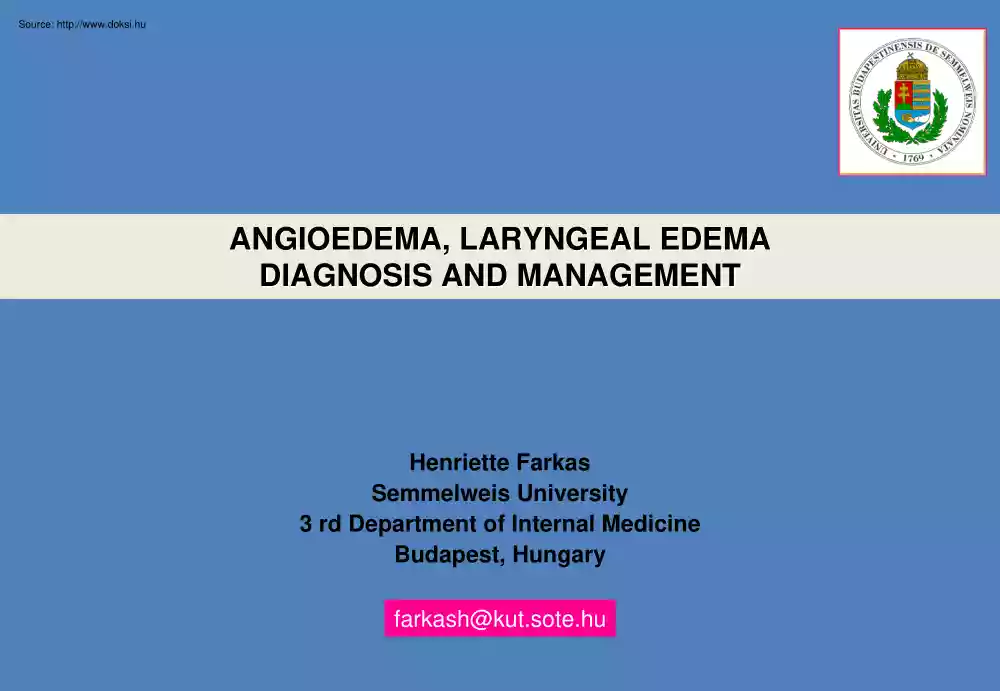
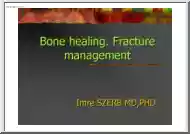
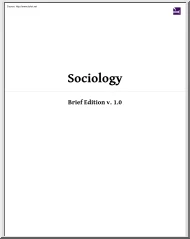
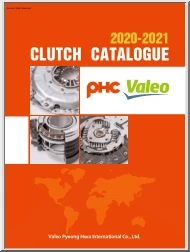
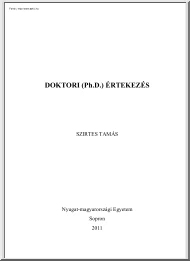
 When reading, most of us just let a story wash over us, getting lost in the world of the book rather than paying attention to the individual elements of the plot or writing. However, in English class, our teachers ask us to look at the mechanics of the writing.
When reading, most of us just let a story wash over us, getting lost in the world of the book rather than paying attention to the individual elements of the plot or writing. However, in English class, our teachers ask us to look at the mechanics of the writing.